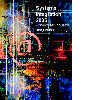 Vision 2005
Vision 2005 Vision 2005
Vision 2005
- the Virtual Enterprise
There was considerable overlap in the futures envisaged by the three groups, so they are coalesced here.
All three breakout groups saw the same basic trend - away from efficiency alone, based upon an assumption of stability (however short-lived), to efficient flexibility. It is not a question of a trade-off between efficiency and flexibility, but a recognition that while efficiency is necessary for competitive advantage, it must be achieved in an environment which demands flexibility of one's own operation, and which for its achievement requires flexibility of one's own processes and one's own suppliers. (Peter Allen presents scientific support for this view in "Complex dynamic systems".)
In essence, this is the vision of Manufacturing 2020 (see views of Nick Scheele, MD of Ford Europe) but much sooner than 2020. Exactly when is anyone's guess, and it is likely that there will be disparities in the rates at which different sectors progress to that vision. But the assumption should be that it will happen sooner rather than later and, without knowing when the vision will be realised, we should be preparing for it now.
Usually we discuss the virtual enterprise from the perspective of the once-monolithic major manufacturers - automotive and aerospace in discrete manufacturing, and bulk chemicals in the process industries. But we must recognise that there is also a bottom-up movement to the virtual enterprise. The 'other' group took as an example the building trade, with its networks of bricklayers, joiners, tilers, plasterers and so on that contact each other in the pub. Future best practice could have a starting point of highly structured manufacturing organisations with rigid IT gaining agility, or loose organisations with no IT gaining structure and capability. They both converge on a 'future organisational form' with dynamic processes enabled by flexible IT.
However, there is unlikely to be 'a' style of virtual enterprise: there will be a spectrum of types - partly a consequence of features of the environment of different sectors, and partly a consequence of 'competitive fashion' in industry. Such differences have always existed - car manufacture has always been different from domestic plumbing - but the boundaries are becoming blurred - broken, even. Individual organisations must determine where in the multi-dimensional spectrum they wish to position themselves - if they have an option.
Such decisions are not entirely unconstrained. The nature of the product - particularly the extent to which it can be specified 'completely' - dictates the extent to which it can be treated as a 'commodity'. The trick, for many, will be to take their bespoke products and find ways of manufacturing and selling them as commodity products, while meeting bespoke client requirements. 'Configuration' will be a critical consideration. (See views of Peter Thorne of Cambashi - "Changing gear - and mindsets")
Moreover, each organisation usually participates in a mesh of business relationships. No organisation is a corporate island - the whole mesh must change shape to allow each participant to change its relationships. The speed at which the transformations can occur is also heavily dependent on legislation and regulation - the more the slower.
Thus distinctions between the nature of the product, the culture of the sector, the quality standard, the skill capability requirement, the complexity of product and service in which it is to be embedded, will lead to different 'virtual enterprise' forms that will prosper for that particular product type.
It is not just that different organisations will be positioned differently in the space of possibilities - highly structured to very fluid - the new organisational forms that will prosper in the e-world will have a combination of characteristics from the very structured to the totally unstructured.